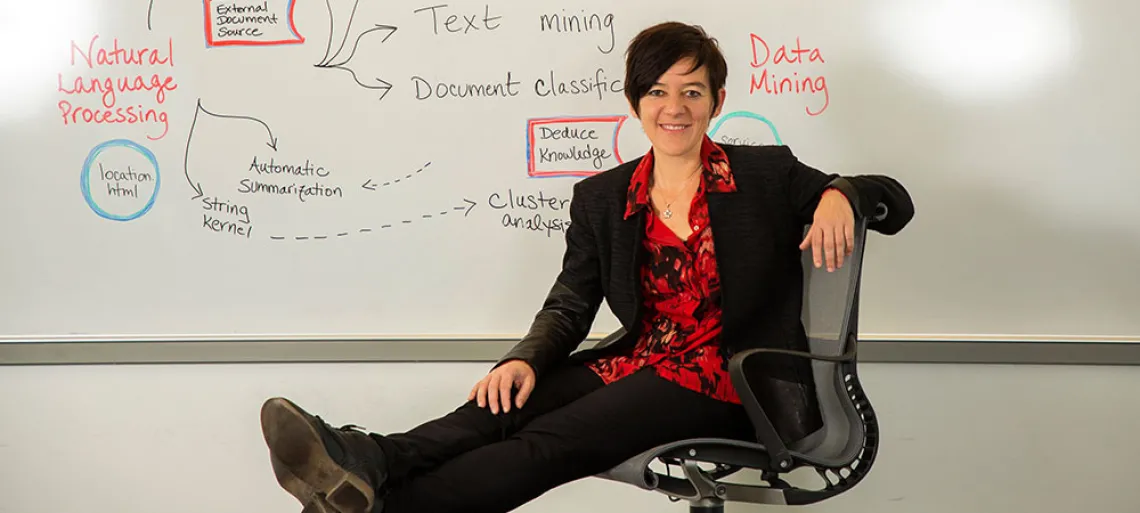How Machine Learning Can Simplify Medical Jargon

Everyone wants to understand what’s going on with their health. But medical terminology can be difficult to comprehend. Research from the Eller College of Management seeks to change that.
MIS professor and Associate Dean for Research Gondy Leroy is leading a team focused on text and audio simplification for health-related information.
The tool they developed is reliant on machine learning and natural language processing. The ideal user? “Anybody who creates any information for any health consumer,” says Leroy.
Through the tool, people can enter medical text, click “simplify” and see simplification suggestions backed by user studies. Not only does the tool highlight lexical chains, but it also shows statistics on metrics like verb count and average grammar frequency. A visualization feature allows users to compare the original text to other sources like Wikipedia, the Mayo Clinic and the WebMD blog.
Leroy’s new project expands on this and shifts the focus to simplifying audio.
“We’re the only ones in the country to do this,” Leroy says of the team’s audio project.
With the tool, users can generate audio clips of medical texts. Then they can adjust the rate and timbre of speech, change the accent and gender of the speaker and even hear emphasis on certain words.
The research team is comprised of a diverse group of individuals from several disciplines, including MIS, communication, psychology, computer science and medicine. Researchers include everyone from an undergraduate student to physician, among multiple others at various levels.
The interdisciplinary diversity goes beyond this endeavor. Leroy is working on two other NLP and machine learning projects. One focuses on autism diagnoses and the other centers on Valley fever diagnoses. These involve doctoral students, master’s students, undergraduates and even high schoolers.
“The whole education pipeline is represented this summer,” Leroy says.
For her, the focus is not just on conducting research. It’s also about mentorship and helping students find role models as they move forward in their academic careers.

